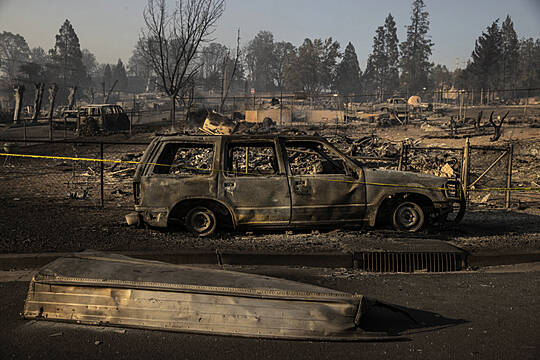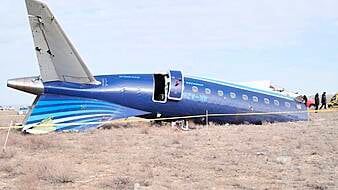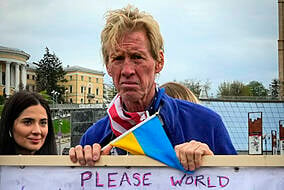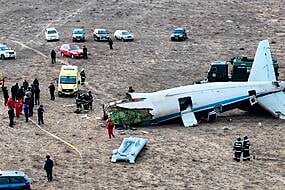About 1,000 people in the rural northern California community of Weed were still being kept from their homes as firefighters worked to contain a blaze that had sparked out of control at the start of the holiday weekend.
Power outages, smoky skies and uncertainty about what the day would bring left a feeling of emptiness around the town the morning after evacuation orders were lifted for thousands of other residents.
“It’s eerily quiet,” said Susan Tavalero, a Weed city councillor, who was driving to a meeting with fire officials.
She was joined by Mayor Kim Greene, and the two hoped to get more details on how many homes had been lost.
A total of 132 structures were destroyed or damaged, fire officials said on Sunday, though it was not clear whether they were homes, businesses, or other buildings.
Crews kept the flames, known as the Mill Fire, from growing overnight.
As of Sunday morning, the fire covered about 6.6 square miles and was 25% contained, numbers unchanged since Saturday night, according to the California Department of Forestry and Fire Protection’s morning report.

Three people were injured, according to Cal Fire, but no other details were available.
Two people were brought to Mercy Medical Centre Mount Shasta, Cal Fire Siskiyou Unit Chief Phil Anzo said on Saturday.
One was in stable condition and the other was transferred to UC Davis Medical Centre, which has a burn unit.
Nearby, crews battled another blaze known as the Mountain Fire, which also sparked on Friday, though in a less populated area.
More than 300 people were under evacuation orders.
Weed, home to fewer than 3,000 people about 280 miles northeast of San Francisco, has long been seen by passers-by as a whimsical spot to stop along Interstate 5.
But the town, nestled in the shadow of Mt Shasta, is no stranger to wildfires.
Dominique Mathes, 37, said he’s had some close calls with wildfires since he has lived in Weed.
Though fire dangers are becoming more frequent, he is not interested in leaving.
“It’s a beautiful place,” he said.
“Everybody has risks everywhere, like Florida’s got hurricanes and floods, Louisiana has got tornadoes and all that stuff.
“So, it happens everywhere. Unfortunately here, it’s fires.”

The winds make Weed and the surrounding area a perilous place for wildfires, whipping small flames into a frenzy.
Weed has seen three major fires since 2014, a period of extreme drought that has prompted the largest and most destructive fires in California history.
That drought persists as California heads into what traditionally is the worst of the fire season.
Scientists say climate change has made the West warmer and drier over the last three decades and will continue to make weather more extreme and wildfires more frequent and destructive.
Crews battled flames while much of the state baked in a Labour Day weekend heat wave, with temperatures expected to top 100 degrees Fahrenheit (38 degrees Celsius) in Los Angeles, exceptionally warm weather for Southern California.
Temperatures were expected to be even hotter through the Central Valley up to the capital of Sacramento.
The California Independent System Operator issued its fifth “flex alert,” a plea for people to use their air conditioners and other appliances sparingly from 4 to 9pm to protect the power grid.







